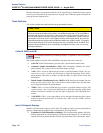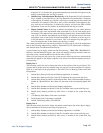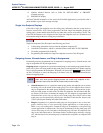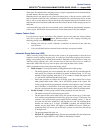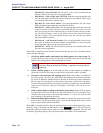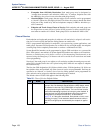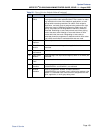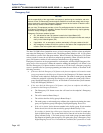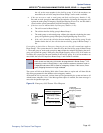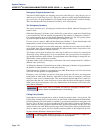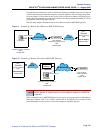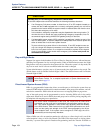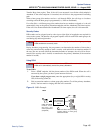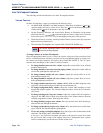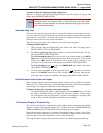
System Features
INTER-TEL
®
CS-5200/5400 ADMINISTRATOR GUIDE, ISSUE 1.1 – August 2005
Page 160 Emergency Call
Emergency Call
The Inter-Tel 5000 allows immediate access to local emergency facilities when an endpoint
user enters the Emergency Call feature code. The dialing pattern defaults to 911 in US systems
and to 999 on systems in the European market. When activated, the Emergency Call feature
selects a trunk or routes the call based on endpoint programming. When activated, the Emer-
gency Call feature overrides all toll restrictions and trunk access programming.
Emergency Extensions can be programmed for each endpoint, and Day/Night Emergency Out-
going Access Lists are used to validate the extension making the emergency call. When a user
dials the Emergency Call phone number at intercom or CO dial tone, emergency outgoing
access is granted based on system programming and what the user dialed, as described in the
following scenarios:
• If the user dials the Emergency Call feature code from an endpoint with a trunk or trunk
group programmed as the Emergency Extension, the Emergency Call feature routes the
call based on the endpoint’s Emergency Extension. The trunk or trunk group does not
validate the endpoint originating the emergency call against the trunk group’s Emer-
gency Day/Night Outgoing Access List. An idle trunk is seized and the system automat-
ically dials Emergency Number 1.
• If the user dials the Emergency Call feature code from an endpoint with ARS pro-
grammed as the Emergency Extension:
a. The Emergency Call feature routes the call based on the endpoint’s Emergency
Extension.
b. The call is routed to Route Group 1.
c. The call tries the first facility group in Route Group 1.
d. The trunk group or node trunk group validates the endpoint originating the emer-
gency call against the group’s Emergency Day/Night Outgoing Access List.
e. If the call is denied, it tries the next member in the facility group. If each member
denies the call, the call tries the next facility group in Route Group 1’s list.
If everything is denied due to Emergency Outgoing Access, the call is routed once
again to Route Group 1. The system then tries to route the call on the first facility
group in Route Group 1. The trunk group or node trunk group does not validate
the endpoint originating the emergency call against the group’s Emergency Day/
Night Outgoing Access List. If no trunks are available, the system tries to route
NOTICE
It is the responsibility of the organization and person(s) performing the installation and main-
tenance of Inter-Tel Advanced Communications Platforms to know and comply with all regu-
lations required for ensuring Emergency Outgoing Access at the location of both the main
system and any remote communication endpoints.
Ask your Inter-Tel equipment provider or Inter-Tel-certified technician for details about Inter-
Tel systems’ Emergency Call capability. Remote IP and SIP endpoints may require gateway
access to nearby emergency responders.
Emergency Call phone numbers include:
• 911, the default for Inter-Tel systems located in the United States (US).
• 999, the default for Inter-Tel systems located in the European market and used pri-
marily in the United Kingdom (UK).
• If applicable, 112, an emergency number used widely in Europe outside of the UK.
• Any emergency number, such as for a police or fire station, that is appropriate for the
location of the main system and/or remote endpoints.



